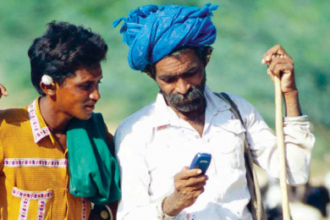In 2003, I encountered my first abstinence-only sex education program in Arizona. My health classes transitioned from learning about exercise and nutrition, to six years of abstinence indoctrination through fear, misogyny and shame.
In 2003, I encountered my first abstinence-only sex education program in Arizona. My health classes transitioned from learning about exercise and nutrition, to six years of abstinence indoctrination through fear, misogyny and shame.
A 2007 study in the Journal of Adolescent Health shows that sex education can affect how teenagers approach their sex lives, and how those resources are presented can have lasting effects. My peers and I should have been learning information and skills needed to make healthy, informed and unbiased decisions about sex. We needed to know the evidence-based, factual risks associated with sexual activity and how to limit those risks, and then learn lessons on how to have and maintain a happy, healthy sexual relationship with ourselves and others.
Instead instructors preached about core lifestyle values associated with abstinence. The chief principle among them is that the only acceptable option for sex is having it in a monogamous, heterosexual marriage, and any lifestyle choices short of abstinence until marriage invalidate us in the eyes of our families, future spouses and our community.
It’s unnerving that abstinence-only sex education, which dozens of studies in the last decade prove to be inaccurate, ineffective and harmful, is still the norm for millions of public school students in the United States.
To combat the slews of studies proving these courses to be harmful and a waste of federal tax dollars, the abstinence programs, such as the popular Choosing the Best series, which is used in 44 states and taught annually to about four million students, have rebranded themselves as abstinence-plus or abstinence-focused. These programs now proudly declare their lessons are part of a medically-accurate and evidence-based curriculum. And improvements on scientific accuracy of the information actually have been made, especially in the last three years. Plus some of these courses started addressing subjects like contraception, date rape, the right to refuse sex, and sexting. But much of the language within these programs still promotes the same fearful and shameful culture my peers and I went through as teenagers.
For example, one lesson in ninth grade contained a class-wide exercise where the instructor unwrapped a tootsie roll and told students to pass it around. After everybody touched the candy, the teacher asked if anybody would like to eat it. Since it’s now unsanitary nobody accepted his offer. He then told us that our sexual lives—and those of the women we have relationships with—are the equivalent of this candy. Nobody wants a gross piece of candy that has been passed around; likewise, nobody will want a spouse or lover who has been with multiple partners either.
Telling high school freshman that sex out of wedlock destroys any hope of being desired or loved as a person is preposterous and morally corrupt. Juxtapose that against the misogynistic message that men should reject all women who have had sex with anybody besides them, and it propagates slut-shaming. Now combine these messages with the stereotypical ‘sex-makes-the-man’ archetype promoted in popular teen movies like American Pie and Superbad, and it results in teenagers being bombarded with misinformation and loaded with negative stereotypes and beliefs.
And this is far from an isolated incident.
Similar exercises have been taught to millennials throughout the country for more than a decade. A female-focused example is often called “A Mint for Marriage,” and it was practiced in Oxford, Mississippi just last year. Instructors passed a peppermint patty among students to illustrate that a girl is no longer clean or valuable to a future husband after she’s had sex. This is an approved part of the curriculum Mississippi passed in 2011; however, the Oxford School District superintendent says the lesson isn’t currently practiced.
Teaching young people to wait for sex until they’re old enough, responsible and ready—and making sure they know how to correctly use contraception when that time comes—is a valuable part of any sex education curriculum. But that’s not what abstinence-only courses did when I was in school, and it’s not what they do today.
Despite numerous government investigations and analyses of abstinence-only programs by Congress and the Department of Health and Human Services, legislators still can’t decide the best option. That’s why there is no uniform federal mandate for schools to offer sex education and HIV/AIDS prevention, only 13 states require information provided in sex education classes to be medically accurate, and only eight states enforce a non-discrimination statute.
Thankfully, scientists, researchers and education advocates have a clear, definitive solution for what kinds of sex education change behavior: comprehensive sex programs that are scientifically and medically accurate, and don’t use any of the shameful or fearful lessons or language that permeates abstinence-focused options, says Dr. Leslie Kantor, the vice president of education at Planned Parenthood Federation of America.
“The behaviors that we usually measure when it comes to stating sex education works are either abstinence, as a behavior, or using condoms or other forms of birth control when you have sex,” Dr. Kantor says. “And now there are over 100 studies that show sex education programs with certain characteristics work effectively, such are they’re taught by trained teachers, they include opportunities for young people to build the skills they need to communicate, negotiate and refuse, and they teach about contraception and how to use it.”
These commonsense programs starting gaining ground in 2010, when the Obama administration eliminated funding for two out of three federally funded abstinence-focused courses: the Community-Based Abstinence Education grant program and the abstinence-only-until-marriage portion of the Adolescent Family Life Act.
In their place the HHS started funding comprehensive sex education programs and compiled a list of sex education courses that are proven to positively modify teen’s behaviors. So there are 35 programs of the list. Only one, Heritage Keepers Abstinence Education, is abstinence only.
The good news is that the HHS shows these programs are influencing teenagers and they are delaying having sex for longer than they used to, plus they’re using contraceptives more often when they do start having sex.
Between 2011 and 2013, 44 percent of female teenagers and 47 percent of male teenagers aged 15 to 19 had sexual intercourse (defined by the HHS as penile-vaginal penetration) at least once; the percentage has declined significantly over the past 25 years, by 14 percent for females and 22 percent for male teenagers, according to data collected by the CDC. The rates for teen pregnancy have also been dropping nationwide. In 2013, the nation’s teen pregnancy rate fell to 26.5 live births per 1,000 15 to 19-year-olds, a 10 percent decrease since 2012.
It’s not a coincidence that these rates are decreasing faster since comprehensive programs started getting funding.
Unfortunately, the pregnancy rates for U.S. teens are still significantly higher than other advanced nations, and Kantor says it’s partially because abstinence education is so prolifically entrenched in the education system. She says the different attitudes between abstinence-focused and comprehensive sex programs are why comprehensive programs are resulting in lower rates; it’s the positivity that comprehensive sex programs take toward contraception and consent, and how they shirk stereotypes.
And my abstinence-only courses took anything but a positive outlook on contraception.
Besides the psychological consequences of teaching my peers and me that having sex out of wedlock somehow devalues us as people, we were also mislead about contraception effectiveness. I was lucky enough to learn at least the basics about different methods of contraception, and we were told the correlating statistics for how effective they were. Some of our questions were answered, too. Many students weren’t so lucky.
But the attitude that instructors took toward contraception assured us that the methods would fail. Our confidence in contraceptives was undermined through games and lessons that showed we would be unlucky enough to become that small failure rate; that we couldn’t trust women because on birth control because they’ll fail to adhere to their medication schedule; that we would all eventually get a STIs or HIV if we had more than one sexual partner because contraception has a failure rate—even though it’s slim. This education created a stigma about contraception among my classmates so they didn’t use any, and several of them encountered pregnancy or STI scares because of it.
Because abstinence programs are so focused on teaching teenagers to say no to sex, they can leave out how to live a responsible, realistic sexual life. It’s embarrassing that the government still funds these programs. I was fortunate enough to dig deeper into the subject because the lessons taught in abstinence-only courses didn’t jive with me. But not everybody will do that. If we want to empower teenagers to be the best version of themselves, then schools need to properly educate them. Shame, fear and guilt are not acceptable founding blocks to learn about a subject that is used throughout our entire lives. So let’s stop pretending that it can be.








